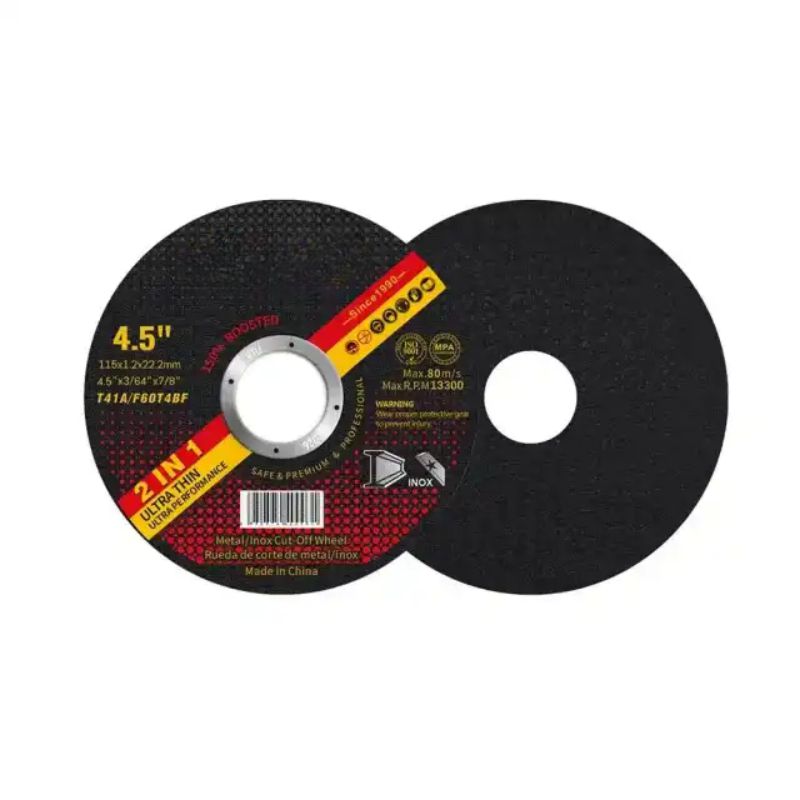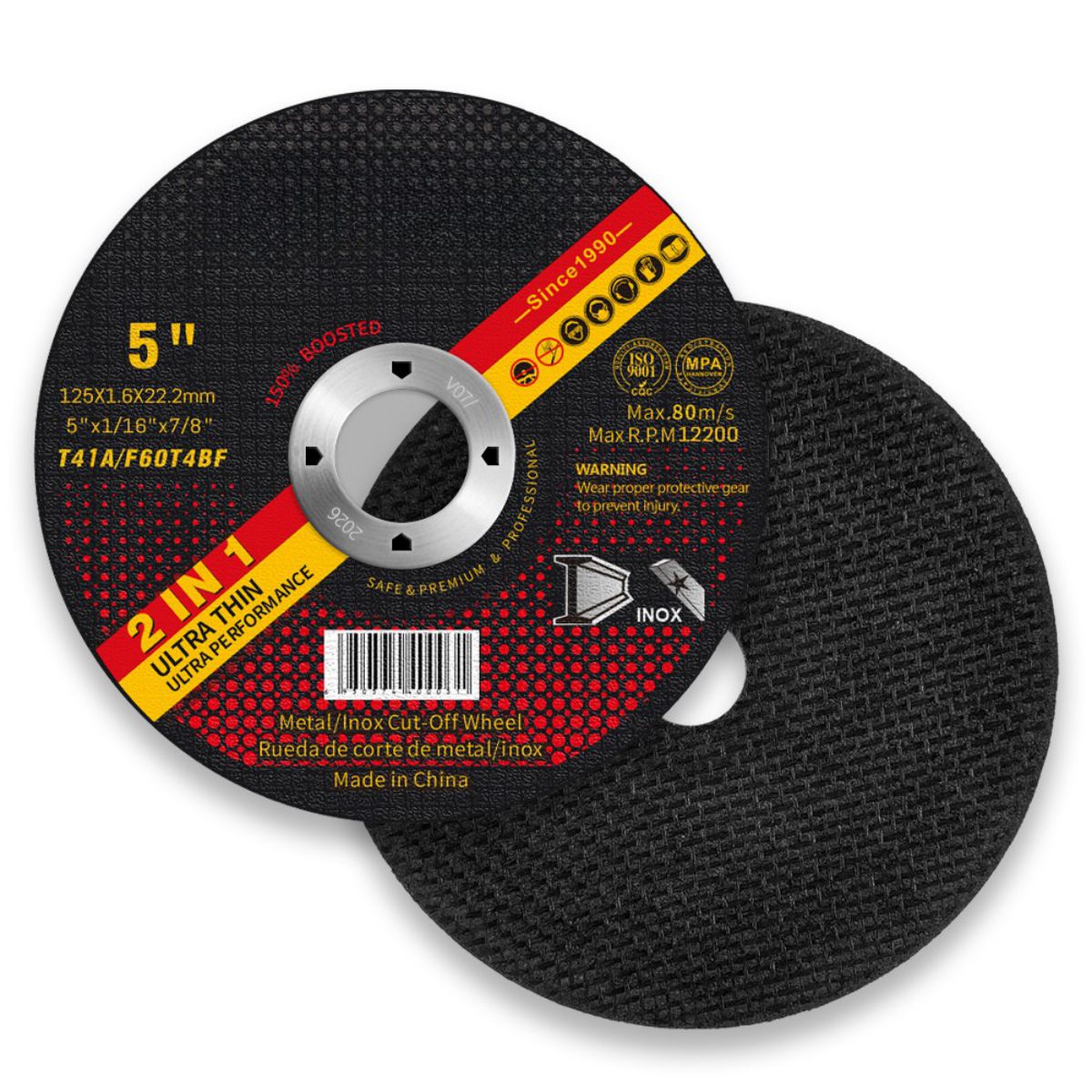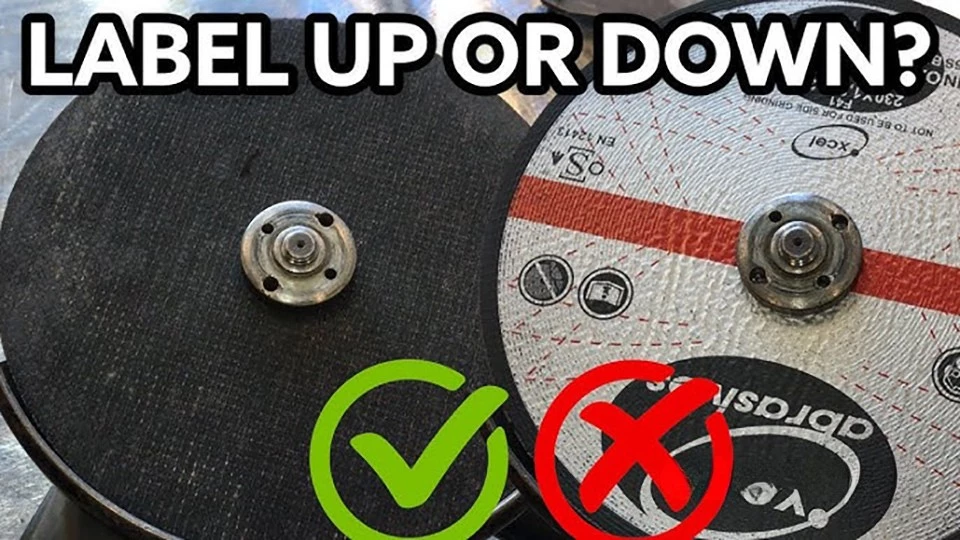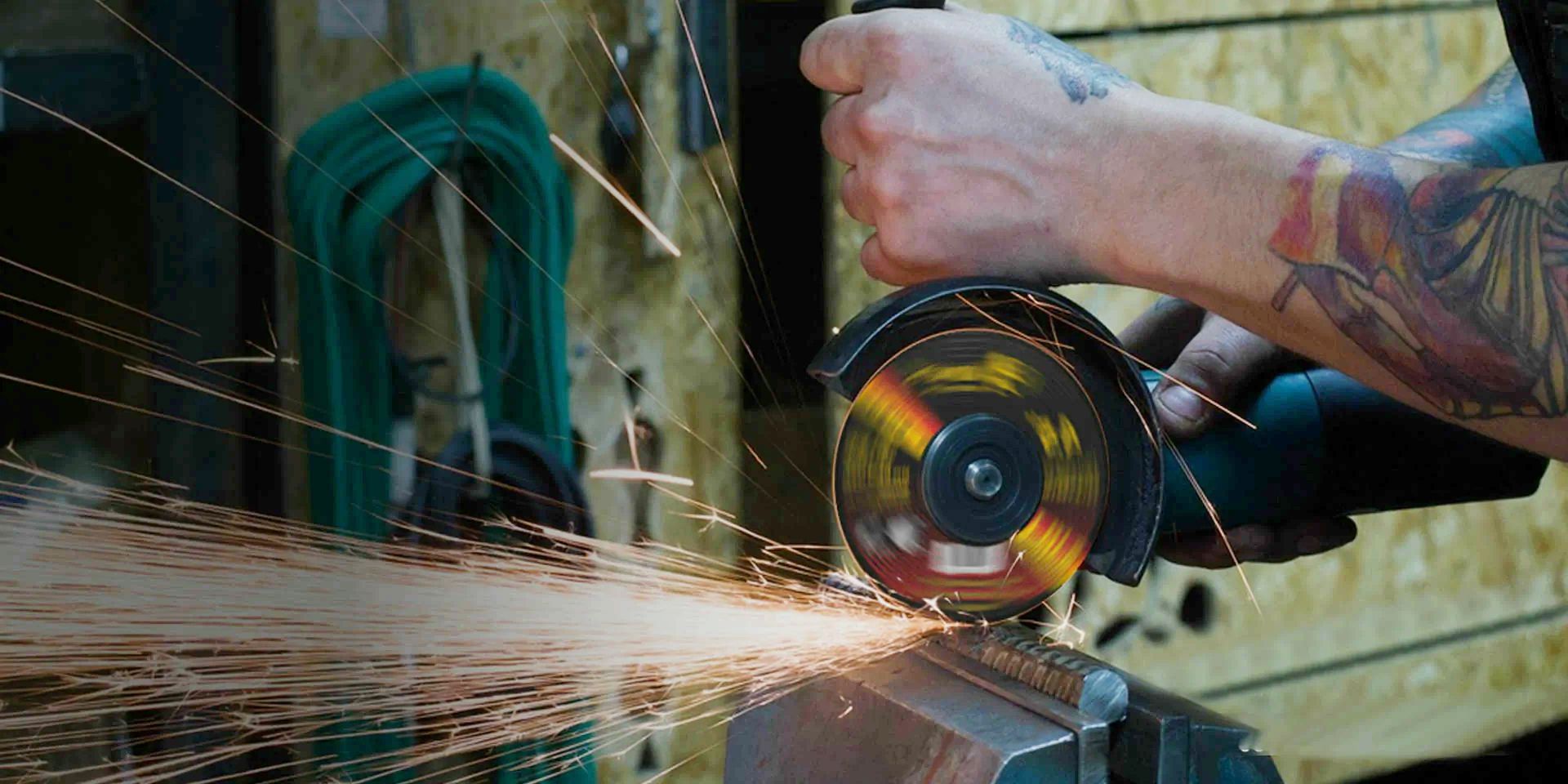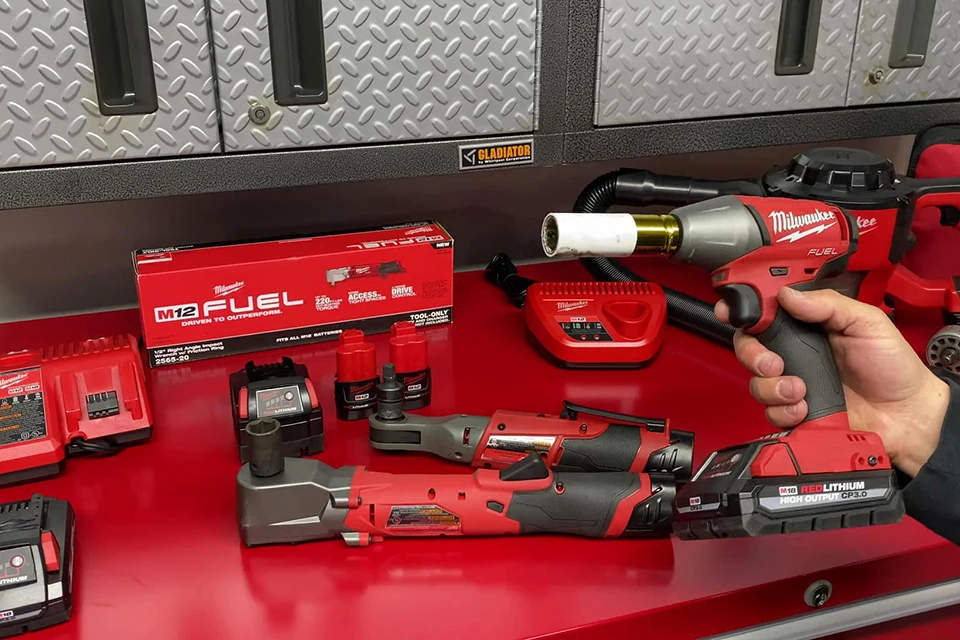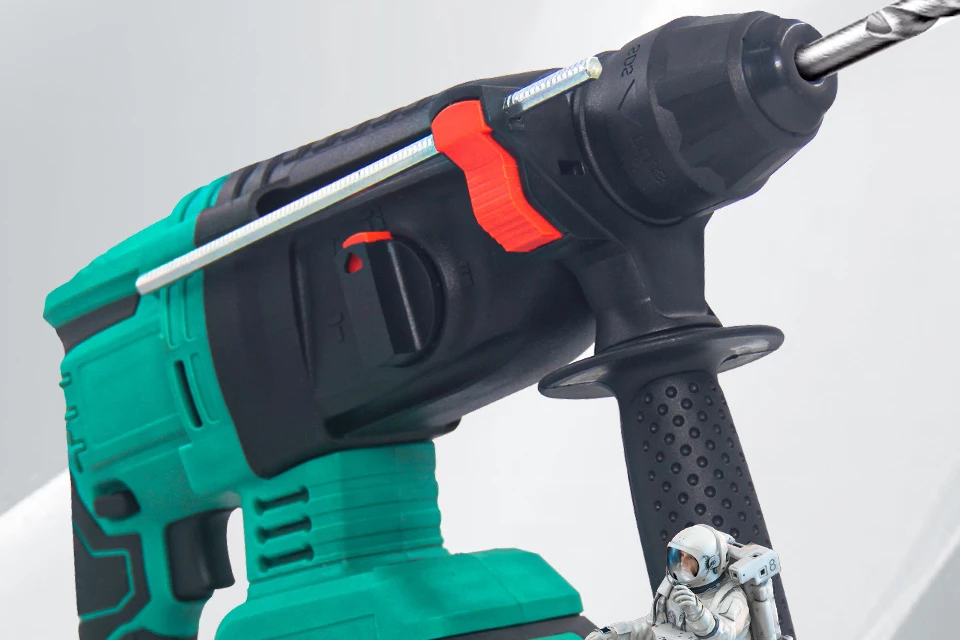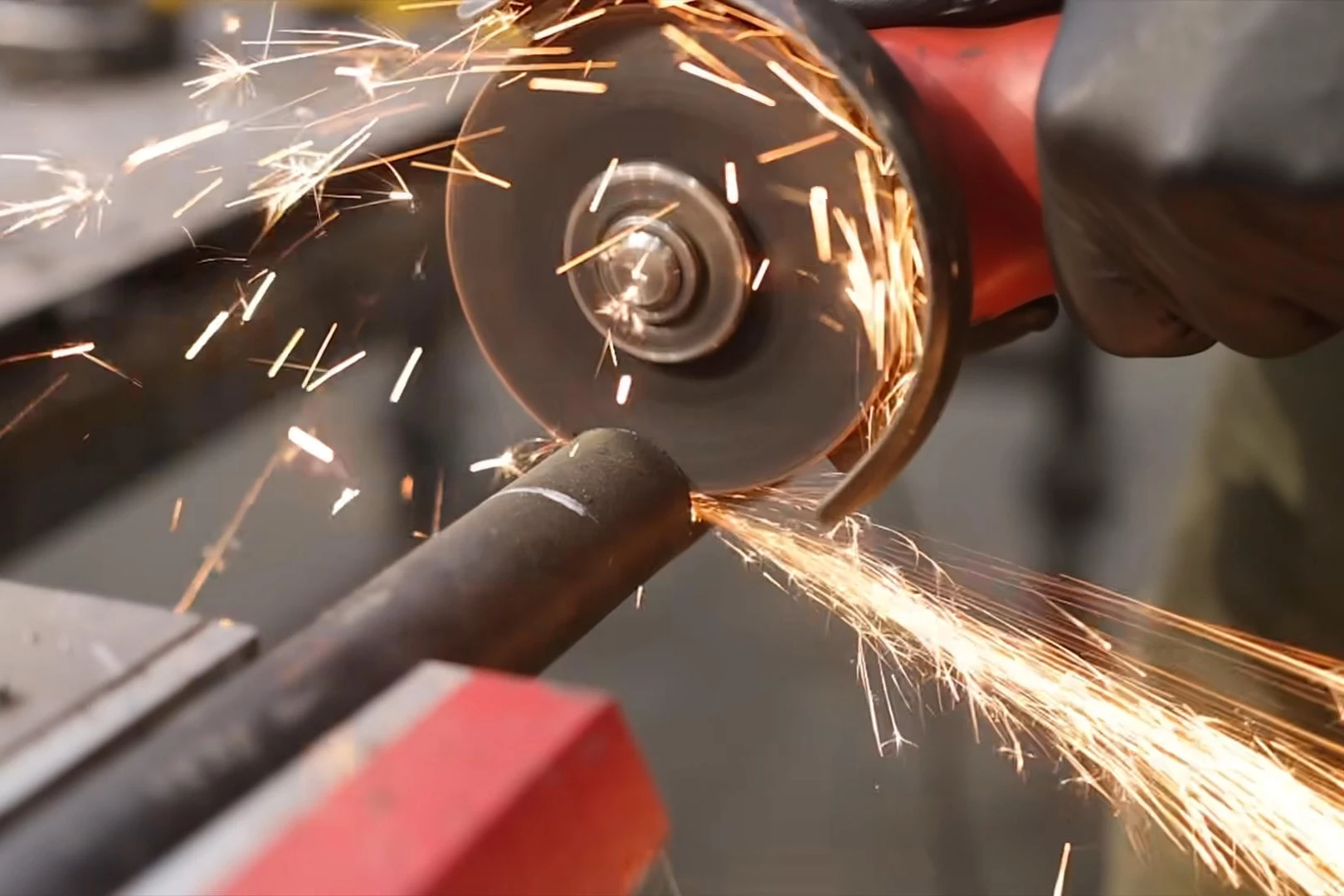
Cut off wheels and cutting discs are often used interchangeably, but cut off wheels typically refer to thin, abrasive-reinforced discs designed for precise 90-degree cuts on metal, while cutting discs can encompass a broader category including diamond-embedded versions for harder materials. The main difference lies in their composition and durability—abrasive cut off wheels shed material for fast cuts but wear quickly, whereas diamond cutting discs last longer but cut slower.
What is a Cut Off Wheel?
A cut off wheel is a thin, flat abrasive disc, usually 1/16 to 1/8 inch thick, mounted on tools like angle grinders or chop saws. It’s made from bonded abrasives like aluminum oxide or zirconia, reinforced with fiberglass for strength. These wheels excel at slicing through metal rods, pipes, or sheets at right angles, removing minimal material for clean edges. I’ve used them extensively in workshops, and they shine for quick jobs where precision matters over longevity. Unlike thicker grinding wheels, cut off wheels aren’t built for side pressure—they can shatter if misused for grinding. Their slim profile minimizes kerf (the cut width), reducing waste on expensive stock.
They come in sizes from 2 inches for small tools to 14 inches for industrial saws. In my experience, choosing the right grain—coarse for fast cuts, fine for smooth finishes—makes all the difference. For example, a 60-grit wheel leaves less burr on stainless steel.
What is a Cutting Disc?
A cutting disc is similar but often a catch-all term for any disc-shaped cutter, including abrasive and diamond types. Abrasive cutting discs mirror cut off wheels, using grains like ceramic for heat-sensitive metals. Diamond cutting discs, however, embed synthetic diamonds in a metal bond, making them ideal for concrete, tile, or hardened steel where abrasives fail. These discs don’t shed; they grind away material steadily. From what I’ve seen on forums like Reddit, users prefer diamond discs for longevity in tough jobs, though they cost more upfront.
Thickness varies, but most are under 1/8 inch for precision. In Europe, “cutting disc” is more common, while “cut off wheel” dominates US lingo. Both attach to angle grinders via arbors, but always match RPM ratings to avoid explosions.
Key Differences Between Cut Off Wheel and Cutting Disc
While often synonymous, cut off wheels are typically abrasive-focused for metal, shedding layers during use, which speeds cuts but creates dust. Cutting discs might include diamond variants that last 20-30 times longer but generate more heat from slower action. Abrasive types cut faster on soft metals like iron, but diamond excels on alloys without contaminating the surface.
Thickness is another split: both are thin, but cut off wheels average 0.045 inches for minimal kerf, while some cutting discs reach 0.093 inches for stability on uneven surfaces. Cost-wise, abrasive cut off wheels are cheap ($1-2 each), but diamond cutting discs run $10-20, paying off in high-volume work. Welders note thinner wheels cut quicker but break easier under torque.
Operationally, cut off wheels suit 90-degree plunges, while broader cutting discs handle slight angles better without binding. Heat buildup differs too—ceramic abrasive wheels stay cooler.
Types of Cut Off Wheels and Cutting Discs
There are several types based on shape and bond. Type 1 wheels are flat for straight cuts on chop saws or die grinders. Type 27 has a depressed center for flush cuts and light grinding on angle grinders. Small-diameter (2-4 inches) suit pneumatic tools for tight spaces.
Abrasive types include aluminum oxide for general metal, zirconia for stainless, and ceramic for alloys like Inconel. Diamond discs come segmented for fast, rough cuts or continuous rim for smooth finishes on non-metals.
I’ve tested Type 41 (another flat variant) on bench grinders—they’re reinforced for high-speed safety. Zirconia Type 27 is a go-to for its balance of speed and life.
Materials and Grains Used
Grains define performance. Aluminum oxide is affordable for ferrous metals like steel, handling welds well. Zirconia adds durability for stainless, self-sharpening as it wears. Ceramic grains cut cool on heat-sensitive alloys, reducing discoloration.
Bonds hold grains: resin for flexibility, vitrified for rigidity in industrial settings. Fiberglass layers prevent shattering. For diamond discs, metal bonds embed diamonds for hardness up to 10 on Mohs scale.
In my research, grit sizes matter—36 for rough copper cuts, 60 for burr-free stainless. Avoid using metal grains on masonry; it clogs and overheats.
Applications in Different Industries
In fabrication, cut off wheels slice rebar or tubing quickly. Automotive shops use them for exhaust pipes. Construction favors diamond cutting discs for concrete or tile.
Welders prefer zirconia for prep work on alloys. In woodworking? Skip them—use carbide saws instead. Thin wheels are often used for home repairs like cutting bolts.
Aerospace demands ceramic for titanium without contamination. Plumbing uses them on copper pipes, but with coarse grains to avoid gumming.
Pros and Cons
Pros of cut off wheels: Fast cuts, low cost, versatile for metals. Cons: Short life, high dust, risk of breakage if twisted.
Cutting discs pros: Longer lasting (diamond), less dust, precise on hard materials. Cons: Slower, pricier, more heat on prolonged jobs.
From experience, abrasive types suit occasional use; diamond for pros. Thinner ones cut faster but kerf less, trading durability.
How to Choose the Right One
Match to material: Aluminum oxide for steel, ceramic for stainless. Check tool RPM—wheel must exceed it. For burr-free, go higher grit.
Consider thickness: 0.045 inches for speed, thicker for control. Budget? Abrasive for casual, diamond for volume. Test on scrap; I’ve wasted wheels ignoring this.
I recommend Walter or Diablo brands for better longevity than cheaper ones.
Safety Tips for Using Them
Always wear PPE: goggles, gloves, mask for dust. Inspect wheels for cracks before mounting—discard damaged ones. Use guards on grinders; never remove them.
Avoid side pressure on thin wheels—they shatter. Let the tool spin up before contact, and keep steady pressure to prevent kickback.
Work in ventilated areas; sparks can ignite flammables. For diamond discs, monitor heat to prevent warping.
Maintenance and Storage
Store flat in dry places to avoid warping. Clean residue with a wire brush after use. Rotate stock—older wheels degrade.
For longevity, avoid overheating; pause on long cuts. I’ve found storing in original packs prevents fiberglass delamination.
Replace when diameter shrinks 50%—smaller wheels overheat faster.
FAQs
Can I use a cut off wheel on wood or plastic?
No, cut off wheels are designed for metals and can melt or gum up on non-metals. Use carbide blades instead for those materials.
What’s the best brand for diamond cutting discs?
Brands like Diablo or FORTEM are popular for durability, especially on concrete. They are known to last 20–30x longer than abrasives in tough jobs.
How do I know if my wheel is worn out?
Replace when the diameter reduces significantly or if it vibrates excessively. Cracks or uneven wear mean immediate discard to avoid shattering.
Are ceramic grains worth the extra cost?
Yes, for heat-sensitive alloys like stainless or titanium—they cut cooler and last longer without discoloration.
Can I use a masonry wheel on metal?
Avoid it; masonry wheels clog on metal and overheat. Stick to metal-specific wheels for safety and performance.
What’s the difference between Type 1 and Type 27 wheels?
Type 1 is flat for straight cuts; Type 27 has a depressed center for flush work and light notching.
How much dust do diamond discs produce compared to abrasive?
Diamond produces far less dust since they don’t shed grains, making them better for indoor or clean environments.
Is a cut off tool better than an angle grinder for these wheels?
Cut off tools are precise for small, repetitive cuts; angle grinders offer more power for larger jobs but harder control.
Why do some wheels break easily?
Thinner wheels (e.g., 0.045 inches) cut faster but fracture under torque or if bound—use steady, even pressure.
Can I sharpen a dull cutting disc?
No, they’re consumable—replace when dull. Attempting to sharpen risks imbalance and explosion.

